
A frog is any member of a diverse and largely carnivorous group of short-bodied, tailless amphibians composing the order Anura. The oldest fossil "proto-frog" Triadobatrachus is known from the Early Triassic of Madagascar, but molecular clock dating suggests their split from other amphibians may extend further back to the Permian, 265 million years ago. Frogs are widely distributed, ranging from the tropics to subarctic regions, but the greatest concentration of species diversity is in tropical rainforest. Frogs account for around 88% of extant amphibian species. They are also one of the five most diverse vertebrate orders. Warty frog species tend to be called toads, but the distinction between frogs and toads is informal, not from taxonomy or evolutionary history.

The Piltdown Man was a paleoanthropological fraud in which bone fragments were presented as the fossilised remains of a previously unknown early human. Although there were doubts about its authenticity virtually from the beginning, the remains were still broadly accepted for many years, and the falsity of the hoax was only definitively demonstrated in 1953. An extensive scientific review in 2016 established that amateur archaeologist Charles Dawson was responsible for the fraudulent evidence.

An out-of-place artifact is an artifact of historical, archaeological, or paleontological interest found in an unusual context, which challenges conventional historical chronology by its presence in that context. Such artifacts may appear too advanced for the technology known to have existed at the time, or may suggest human presence at a time before humans are known to have existed. Other examples may suggest contact between different cultures that is hard to account for with conventional historical understanding.

Timeline of paleontology

Pseudofossils are inorganic objects, markings, or impressions that might be mistaken for fossils. Pseudofossils may be misleading, as some types of mineral deposits can mimic lifeforms by forming what appear to be highly detailed or organized structures. One common example is when manganese oxides crystallize with a characteristic treelike or dendritic pattern along a rock fracture. The formation of frost dendrites on a window is another common example of this crystal growth. Concretions are sometimes thought to be fossils, and occasionally one contains a fossil, but are generally not fossils themselves. Chert or flint nodules in limestone can often take forms that resemble fossils.
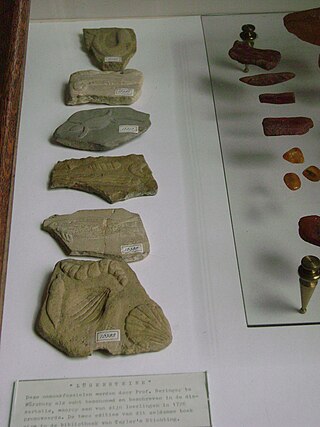
Beringer's Lying Stones are pieces of limestone which were carved into the shape of various fictitious animals and "discovered" in 1725 by Professor Johann Bartholomeus Adam Beringer (1667–1740), Dean of the Faculty of Medicine at the University of Würzburg. Beringer believed them to be fossils, and because some of them bore the name of God in Hebrew, suggested that they might be of divine origin. He published a book on his findings but shortly after discovered that he had been the victim of a hoax. He took the hoaxers to court and won the case but his reputation was forever besmirched.

Toad in the hole or sausage toad is a traditional English dish consisting of sausages in Yorkshire pudding batter, usually served with onion gravy and vegetables. Historically, the dish has also been prepared using other meats, such as rump steak and lamb's kidney.
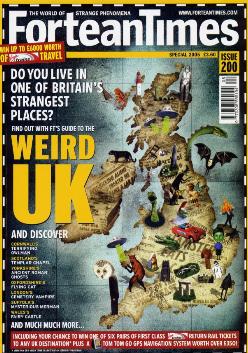
Fortean Times is a British monthly magazine devoted to the anomalous phenomena popularised by Charles Fort. Previously published by John Brown Publishing, I Feel Good Publishing, Dennis Publishing, and Exponent (2021), as of December 2021 it is published by Diamond Publishing, part of Metropolis International.

Ambroise Paré was a French barber surgeon who served in that role for kings Henry II, Francis II, Charles IX and Henry III. He is considered one of the fathers of surgery and modern forensic pathology and a pioneer in surgical techniques and battlefield medicine, especially in the treatment of wounds. He was also an anatomist, invented several surgical instruments, and was a member of the Parisian barber surgeon guild.
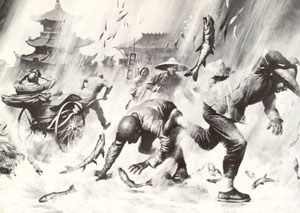
A rain of animals is a rare meteorological phenomenon in which flightless animals fall from the sky. Such occurrences have been reported in many countries throughout history. One hypothesis is that tornadic waterspouts sometimes pick up creatures such as fish or frogs, and carry them for up to several miles. However, this aspect of the phenomenon has never been witnessed by scientists.

The common toad, European toad, or in Anglophone parts of Europe, simply the toad, is a frog found throughout most of Europe, in the western part of North Asia, and in a small portion of Northwest Africa. It is one of a group of closely related animals that are descended from a common ancestral line of toads and which form a species complex. The toad is an inconspicuous animal as it usually lies hidden during the day. It becomes active at dusk and spends the night hunting for the invertebrates on which it feeds. It moves with a slow, ungainly walk or short jumps, and has greyish-brown skin covered with wart-like lumps.
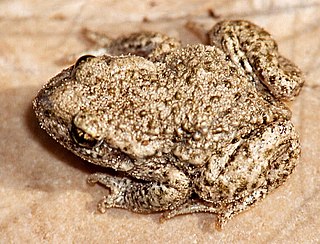
Midwife toads are a genus (Alytes) of frogs in the family Alytidae, and are found in most of Europe and northwestern Africa. Characteristic of these toad-like frogs is their parental care; the males carry a string of fertilised eggs on their backs, hence the name "midwife". The female expels a strand of eggs, which the male fertilizes externally. He then wraps them around his legs to protect them from predators in the water. When they are ready to hatch, the male wades into shallow water, where he allows the tadpoles to leap out of their eggs. Five separate species of midwife toads are found across western Europe, northern Africa, and Majorca.

Star jelly is a gelatinous substance sometimes found on grass or even on branches of trees. According to folklore, it is deposited on the Earth during meteor showers. It is described as a translucent or grayish-white gelatin that tends to evaporate shortly after having "fallen". Explanations have ranged from it being the remains of frogs, toads, or worms, to the byproducts of cyanobacteria. Reports of the substance date back to the 14th century and have continued to the present.

The Scaphiopodidae are a family of American spadefoot toads, which are native to North America. The family is small, comprising only seven different species.
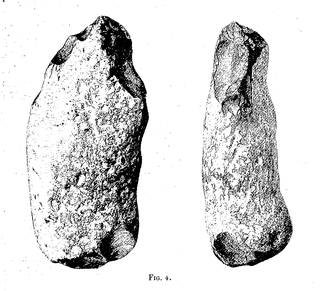
An eolith is a knapped flint nodule. Eoliths were once thought to have been artifacts, the earliest stone tools, but are now believed to be geofacts.
Kenneth Page Oakley was an English physical anthropologist, palaeontologist and geologist.

Charles Dawson was a British amateur archaeologist who claimed to have made a number of archaeological and palaeontological discoveries that were later exposed as frauds. These forgeries included the Piltdown Man, a unique set of bones that he found in 1912 in Sussex. Many technological methods such as fluorine testing indicate that this discovery was a hoax and Dawson, the only one with the skill and knowledge to generate this forgery, was a major suspect.

Booth Museum of Natural History is a charitable trust managed, municipally-owned museum of natural history in the city of Brighton and Hove in the South East of England. Its focus is on Victorian taxidermy, especially of British birds, as well as collections focusing on entomology, chalk fossils, skeletons and botany. It is part of "Royal Pavilion & Museums Trust". Admission to the museum is free.

The Rouffignac cave, in the French commune of Rouffignac-Saint-Cernin-de-Reilhac in the Dordogne département, contains over 250 engravings and cave paintings dating back to the Upper Paleolithic. In conjunction with other caves and abris of the Vézère valley, the Rouffignac cave was classified a Monument historique in 1957 and a world heritage site in 1979 by UNESCO as part of the Prehistoric Sites and Decorated Caves of the Vézère Valley.
Miles Russell, is a British archaeologist best known for his work and publications on the prehistoric and Roman periods and for his appearances in television programmes such as Time Team and Harry Hill's TV Burp.

















